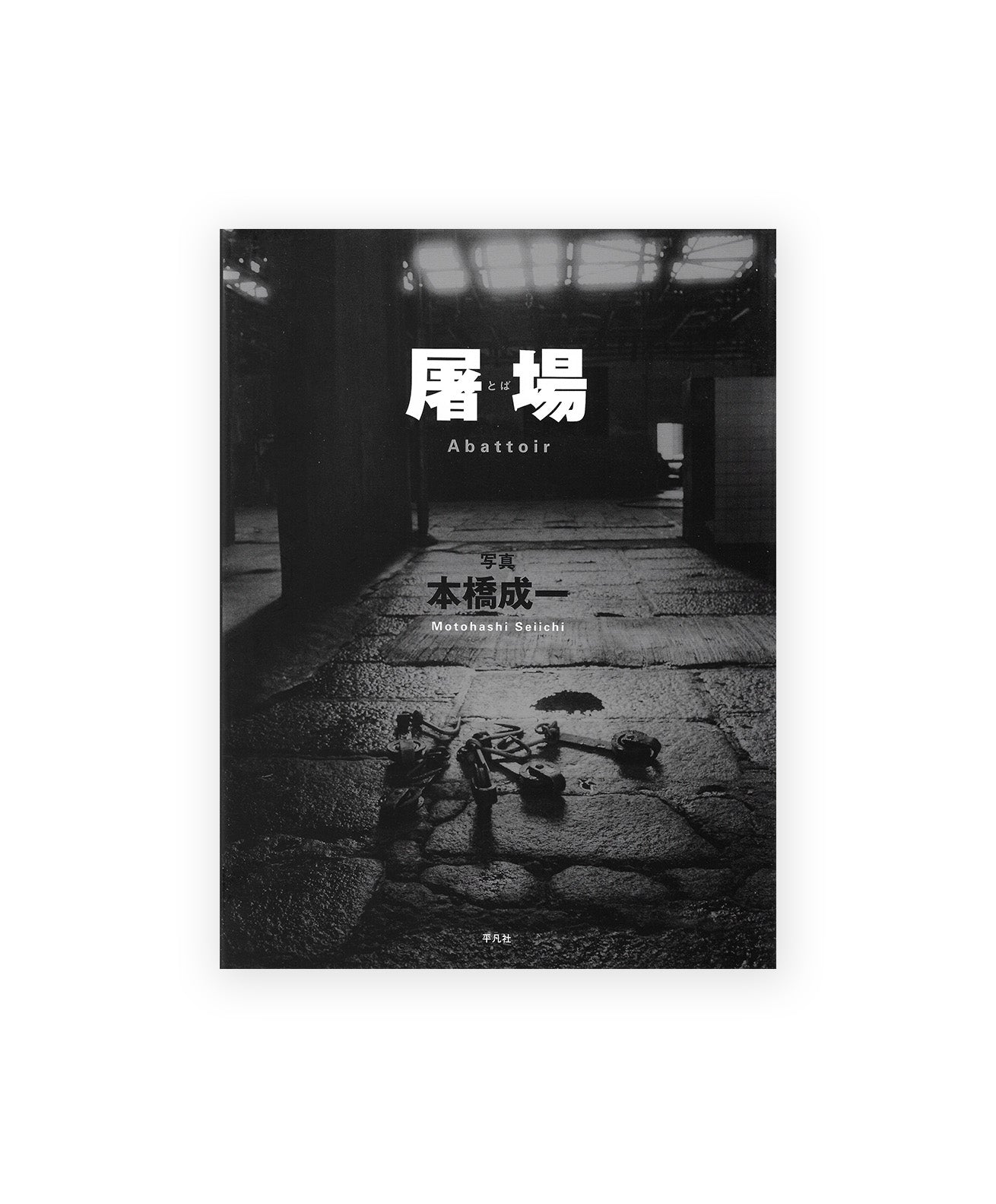SEIICHI MOTOHASHI - Toba
Pickup currently unavailable at 1 rue des Minimes
– Default Title
-
1 rue des Minimes
09709759181 Rue des Minimes
75003 Paris
France
SEIICHI MOTOHASHI
Toba (Slaughterhouse)
Published by Heibonsha, 2011
Book Size 26.5 x 19.5 cm
Pages 128 pages
Hardcover
Language Japanese
First edition, third print
Signed by the artist
Toba (or Slaughterhouse) is the first photographic book on slaughterhouses in Japan.
Motohashi spent 30 years photographing the slaughterhouse in Matsubara, Osaka Department. During this period, the old slaughterhouse was modernized, passing under municipal administration.
The workers who work there are "burakumin", a caste considered to be inferior to Japan, which from feudal times was ostracized from society and condemned to remain by the effect of social segregation and geographical. Their work is considered "cruel" and "dirty"; it's a burakumin job. In this book, all stages of slaughter are presented. Three men face a cow. First they puncture the forehead of the animal with a pistol, in order to slip a wire into its brain. They crush her spinal cord so that the beast does not struggle. Then they knocked over to hang it up by his legs and cut his throat so that the blood would flow all at once. Once the animal is skinned, they cut the limbs, the head, the tongue, the chest... Finally, they are the event to bring down the intestines. All in thirty minutes, and in one knife. Then the women wash and cut the organs so that they are ready to be cooked. Only the head is thrown away. Their faces are those of professionals, display their demands at work and their know-how. They appear almost proud... It is they who finally fill the plates of the Japanese.
The effect of monochrome makes us imagine the color, the smell, the noise and the lively atmosphere of the Matsubara slaughterhouse.
It will have taken ten years for this book to be published, in particular because the workers did not want to appear with their faces uncovered, and encourage discrimination a little more than they suffered.
Through his work and his book, Motohashi makes us think about the importance of where our food comes from. Slaughtering is not a special job, it is a necessary job, since the food that comes from it makes us live.
----------
Toba (or Slaughterhouse) is the first photographic book about slaughterhouses in Japan.
Motohashi spent 30 years photographing the Matsubara (Osaka Prefecture) slaughterhouse. During this period, the old slaughterhouse was modernized by coming under municipal administration.
The workers who work there are "burakumin", a caste considered inferior in Japan, which since the feudal era, has been excluded from society and condemned to remain so by the effect of social and geographical segregation. Their work is considered "cruel" and "dirty"; it is burakumin work. In this book, all the stages of slaughter are presented. Three men face a cow. First they pierce the animal's forehead with a pistol, in order to slide a wire into its brain. They crush its spinal cord so that the animal does not struggle. Then they turn it over to hang it by its legs and slit its throat so that the blood flows in one go. Once the animal is skinned, they cut off the limbs, the head, the tongue, the chest... Finally, they disembowel it to remove the intestines. All in thirty minutes, and with a single knife. Then the women wash and cut up the organs so that they are ready to be cooked. Only the head is thrown away. Their faces are those of professionals, showing their work ethic and know-how. They seem almost proud... They are the ones who ultimately fill the plates of the Japanese.
The monochrome effect makes us imagine the color, the smell, the noise and the lively atmosphere of the Matsubara slaughterhouse.
It took ten years for the book to be published, partly because the workers did not want to appear with their faces uncovered and further encourage the discrimination they suffered.
Through his work and his book, Motohashi makes us think about the importance of where our food comes from. Slaughtering is not a special job, it is a necessary job, since the food that comes from it keeps us alive.
